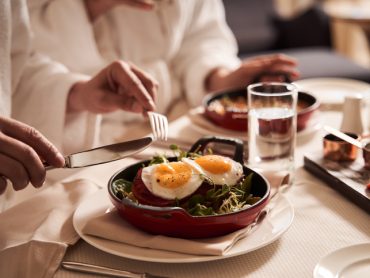Defending the Premier Hotel Restaurant
In a bygone era of hospitality, the ultimate evening experience was that of the grand hotel’s dining room. Dressed in one’s finest fashions, a patron would enjoy the best that the city or region had to offer in both culinary fare and service delivery. A property’s premier restaurant was often a perennial draw for both out-of-towners as well as locals, with reservations coveted and those seated immediately attaining a pseudo-celebrity status. Such an establishment would be the place to see and be seen as all the other high society rubberneckers, all matched by memorable food and prices well beyond what most could afford.
For today’s more spontaneous, less formal and Google-driven culture, dining out is as popular as ever but we’ve blunted the experience in several ways. For one, we hardly ever get dressed up in elegant attire to dine out, save for very special occasions. While dress codes are in effect at many high-end eateries, they are hardly the norm. Instead, the fate of any given restaurant depends more on its differential culinary offerings and the exceptional qualities of its overall concept as well as one’s ability to navigate the social media maelstrom.
One aspect that has remained unaltered is the customer’s desire for an ‘experience’. While fast casual and grab-and-go concepts are essential to rounding out a hotel’s restaurant slate and providing for those people looking for just a meal, the power of a signature dining experience in a hotel cannot be underestimated. This is particularly true at the luxury level where dining is a critical component of a guest’s stay.
A sophisticated meal experience works on multiple levels where other mainstay places do not. The cuisine will often incorporate unfamiliar flavor combinations or creative twists on common foods as well as an elevated presentation to excite in ways where ‘safe’ establishments aim to please by delivering what’s expected. Multiple courses aid in this by increasing a customer’s exposure to what’s offered. Furthermore, a premier restaurant will have premier décor and furnishings, invoking patrons to relish the details of their environment as they wade through the appetizers, mains and desserts.
All these sensory inputs bleed together to heighten a guest’s emotional appreciation of the restaurant and, by extension, the parent hotel. Hence, it makes senses to have a luxurious dining option as part of your repertoire, but the costs of setting up such a restaurant, giving it the proper marketing boot and keeping it going rarely pay out in anywhere close to a satisfactory breakeven point. So, why bother?
It is a matter of strategy. Namely, the best hotel in the city has the best restaurant; the most luxurious resort has the most luxurious restaurant for special occasion dining. In a world where you must appear at the top of someone’s internet search in order to even be considered, there is no room for second place. Amidst the uncountable dining options that the modern customer has at their fingertips, you can only stand out by being the best, or at least the best at one or two specialties.
From there, the halo effect comes into play. That is, having a signature restaurant that is enthusiastically regarded helps sell the middle tier product. The prestige accrued by your celebrity chefs and the prospect of a Michelin star reverberates throughout the entire property and lets all other establishments bask in the light. This halo can of course be amplified through social media and public relations to further its efficacy.
And in terms of keeping the lights on, any uber-chic eatery presents an additional sales opportunity in that an evocative restaurant can be reserved for private events both social in nature as well as corporate. In many ways, it is a necessary feature as part of a larger group deal. As a corollary to this, consider a hotel’s premier suite where it is hardly ever booked at the full rate but still necessary as part of the overall rooms strategy to help fill the bulk of the inventory. High-end dining operates on a similar level in that it helps sell the rest.
From an accounting standpoint, consider a top end restaurant as part of your overall dining program. Evaluate the need not as a separate profit center but based upon your overall business strategy before deciding if it is right as part of your food and beverage mix. However, as true dining experiences are decreasing in popularity, it’s all the better an opportunity to invigorate your cuisine slate by offering guests an inspiring meal in an exhilarating setting.




